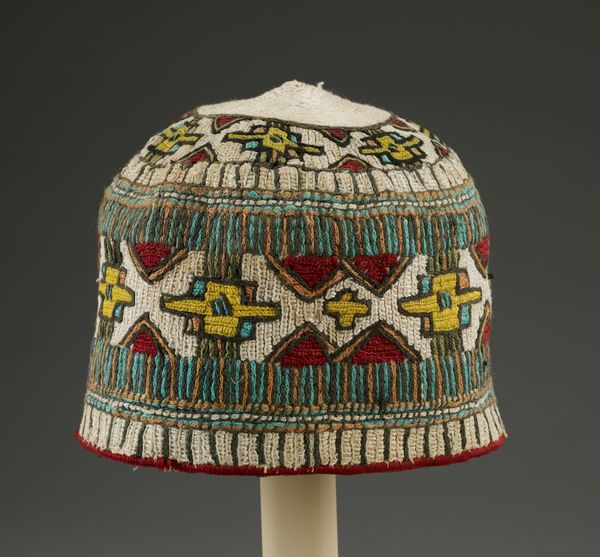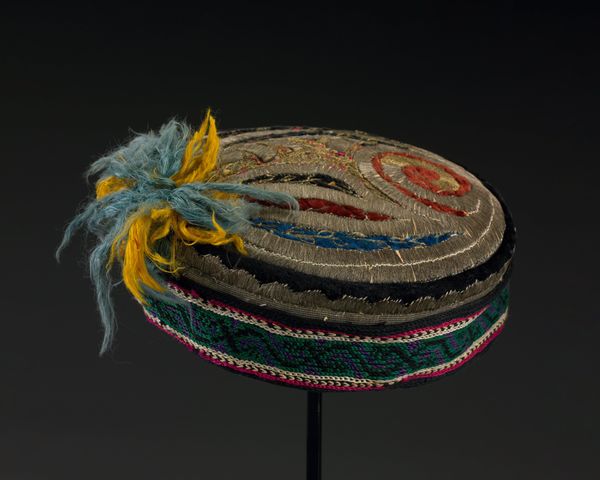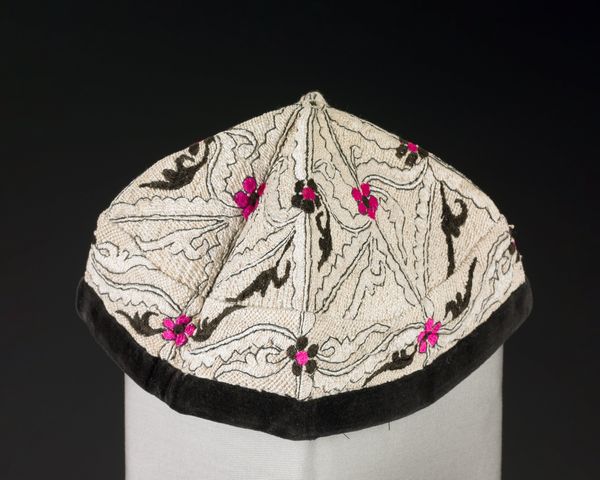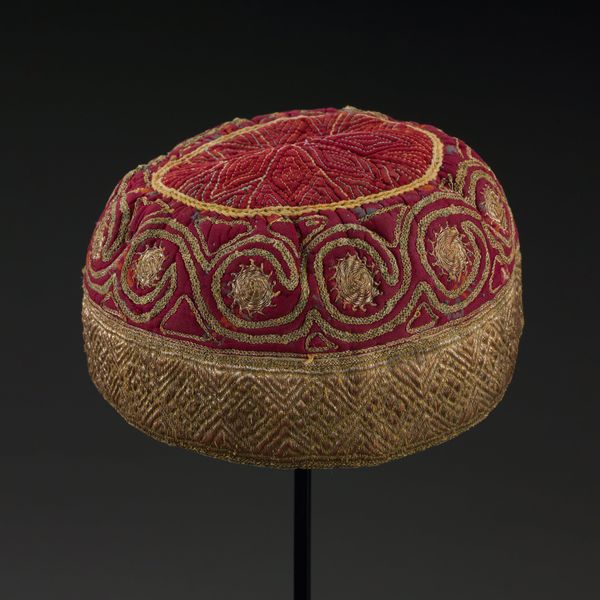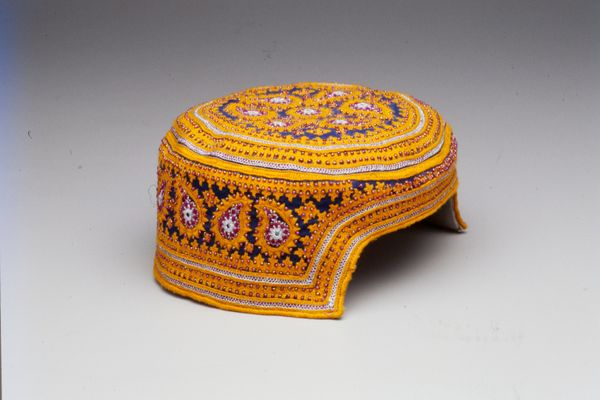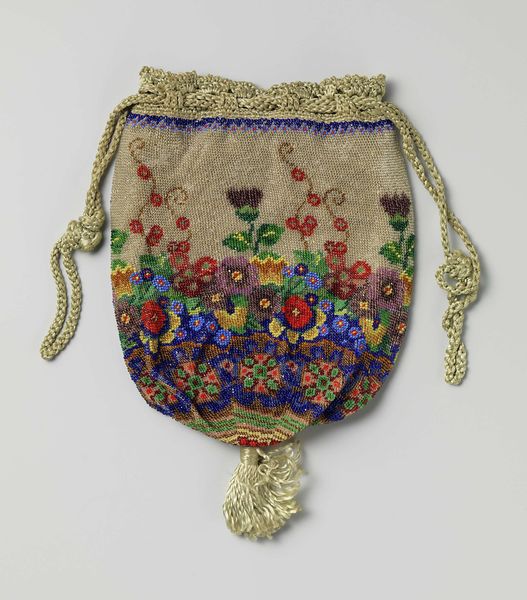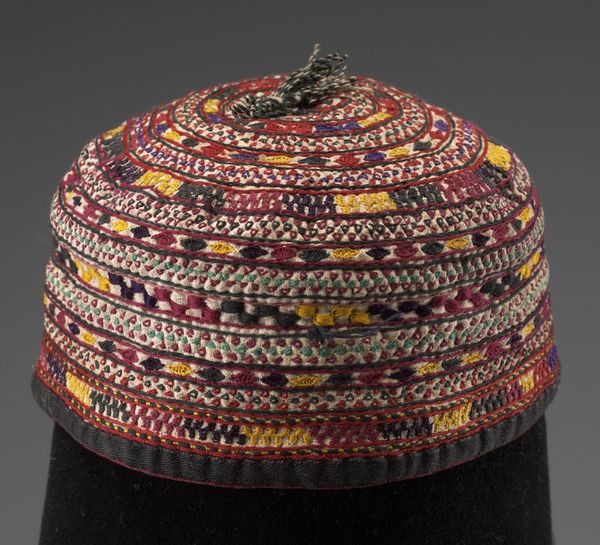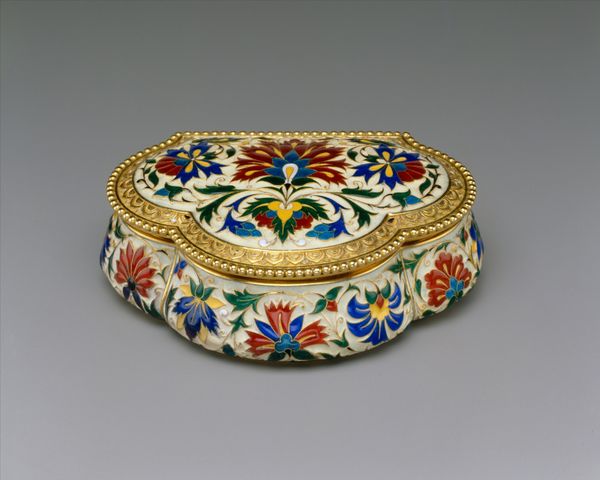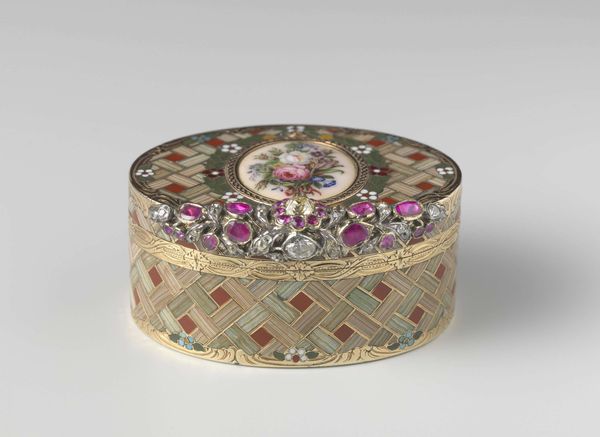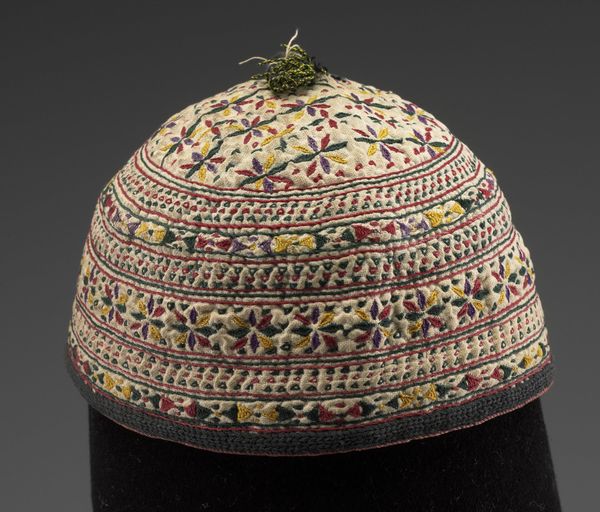
fibre-art, textile, cotton
#
tribal design
#
natural stone pattern
#
fibre-art
#
circular oval feature
#
colourful design
#
asian-art
#
textile
#
fashion and textile design
#
pattern repetition
#
cotton
#
decorative-art
#
layered pattern
#
combined pattern
#
decorative art
#
ethnic design
Dimensions: 3 3/4 x 8 7/8 x 8 7/8 in. (9.53 x 22.54 x 22.54 cm) (approximate)
Copyright: Public Domain
Curator: So vibrant! It feels almost… celebratory. Editor: Indeed! What we’re looking at is a “Hat”, circa 1950, and it’s currently held here at the Minneapolis Institute of Art. Made with cotton and fiber art techniques, this piece speaks volumes about Hazara craftsmanship. Curator: Hazara, got it. The stitching is so dense, almost like tiny painted strokes, each creating such vivid blossoms. The palette—deep greens, fuchsia, blazing oranges. Did they have particular dye processes back then? Editor: Absolutely. Examining the processes behind these colours, we often find plant-based dyes. Indigo, madder root, pomegranate rinds – sources rooted in the immediate environments where these textiles were created. The repetitive patterns layered meticulously represent complex social and cultural codes, indicating the status and possibly region from which the artisan hails. The labour that must have gone into it! Curator: Thinking about that labour… the meditative aspect, the rhythm of each stitch. Someone poured hours, days, into creating this. It’s not just an object; it’s a testament. I feel this sense of intimacy, almost like reading a visual diary entry of the artisan and owner. Editor: I concur, there is a powerful human story embedded here, which provides unique insights. Beyond its decorative value, items such as this functioned within socio-economic structures. Each colourful floral, and repeated segment alludes to production as it intersects with use-value, revealing social dynamics and status via sartorial expression. Curator: What stories do you think this "Hat" could tell if it had voice? Editor: Definitely tales of cultural identity, resilience, perhaps even quiet acts of resistance, embedded in such a functional form. Its decorative art aspect highlights traditions, preserving a lineage of artisanal labour against external factors of economy. Curator: I think this piece will forever inspire new generations of creative and thoughtful material analysis. Editor: An intricate little window into understanding. One just has to be willing to peer through all those carefully embroidered petals.
Comments
No comments
Be the first to comment and join the conversation on the ultimate creative platform.

